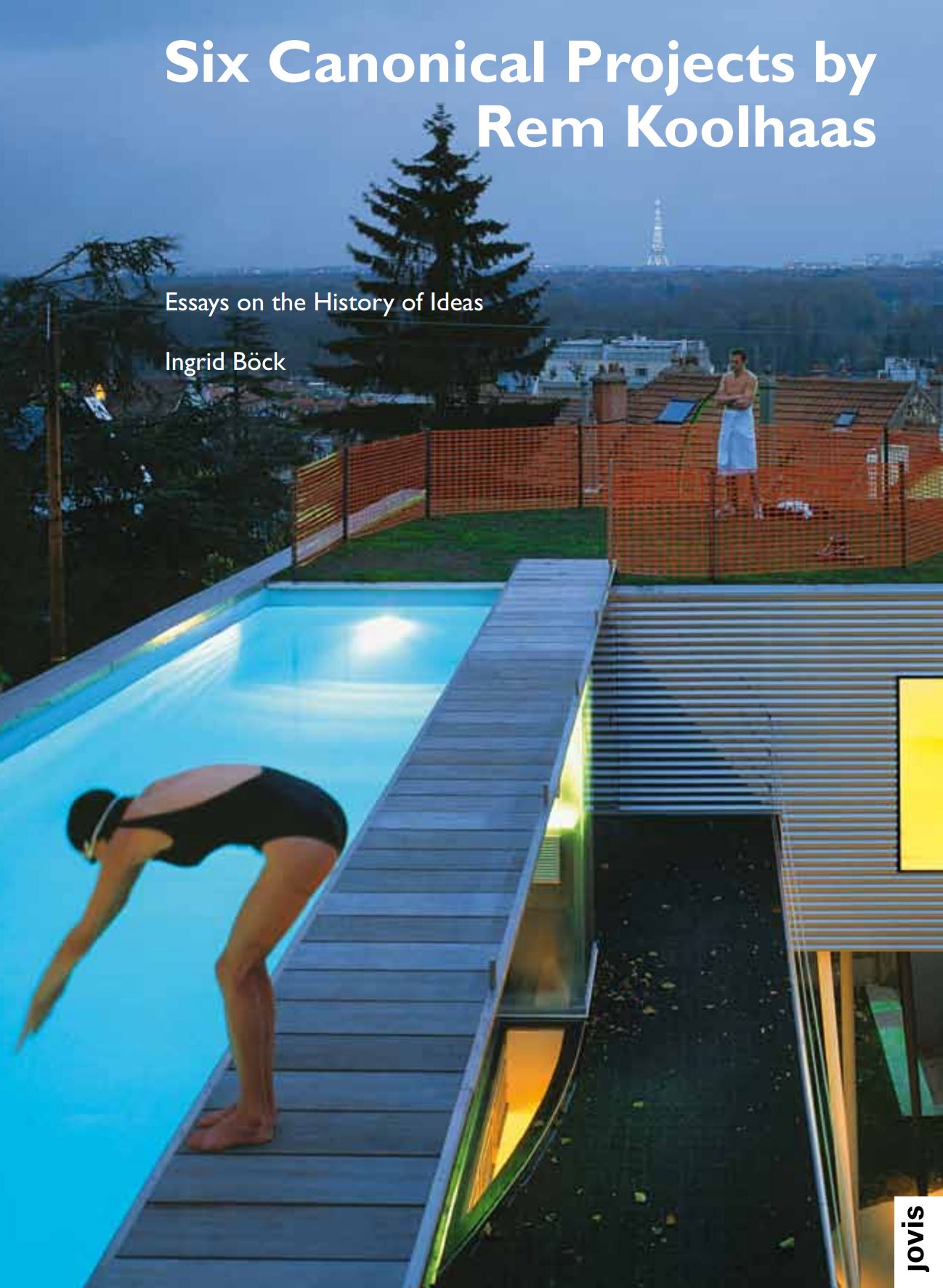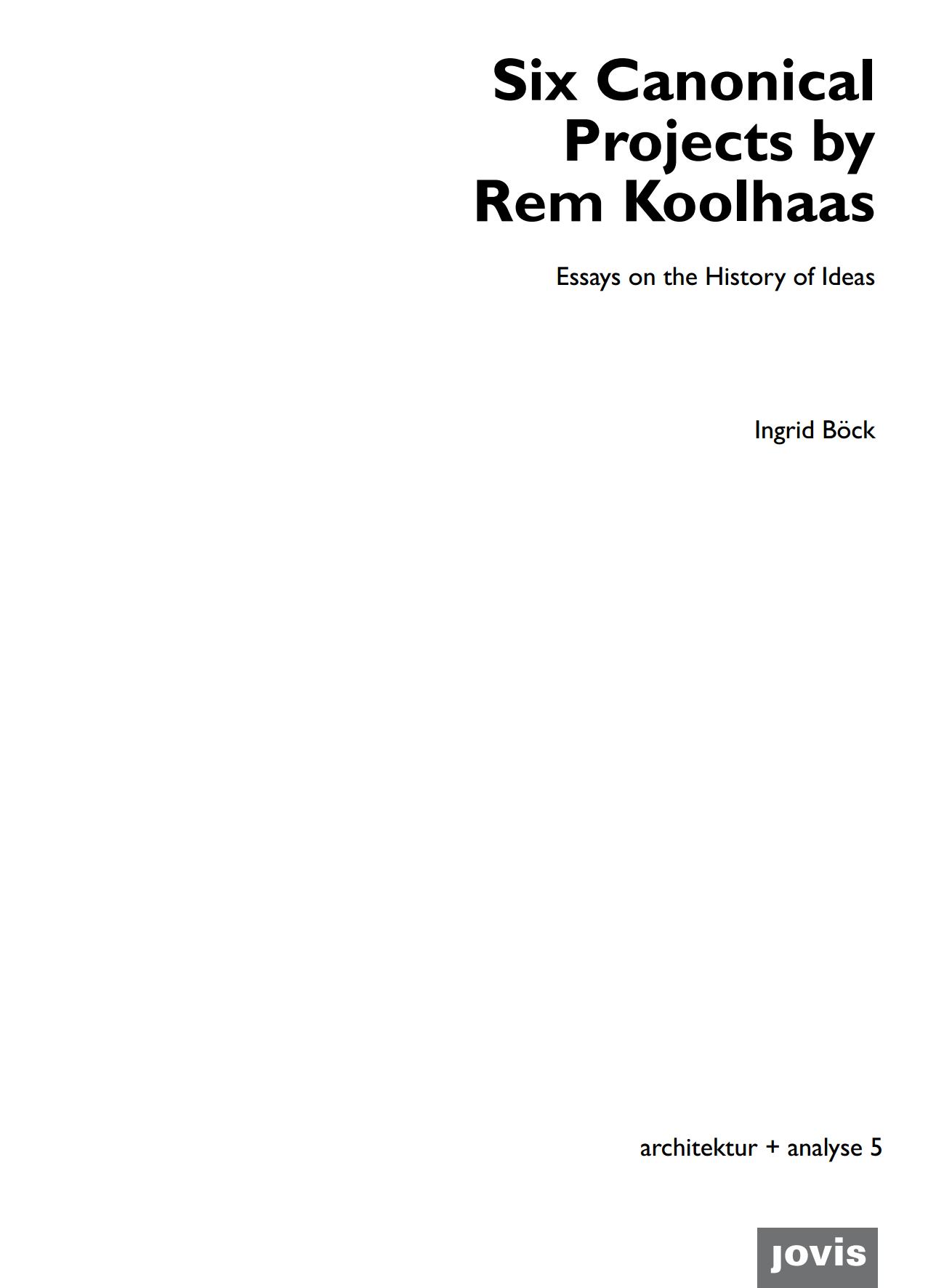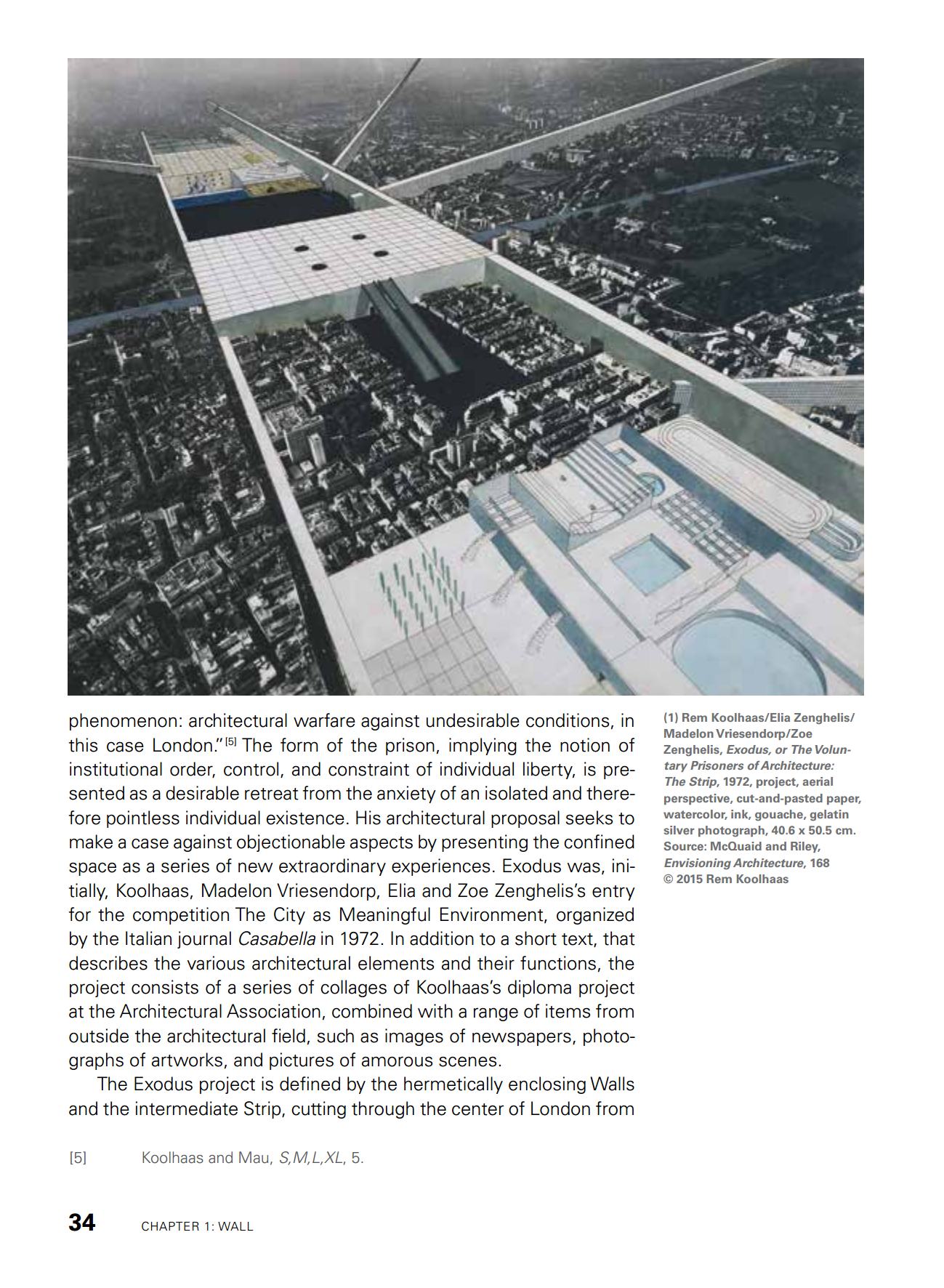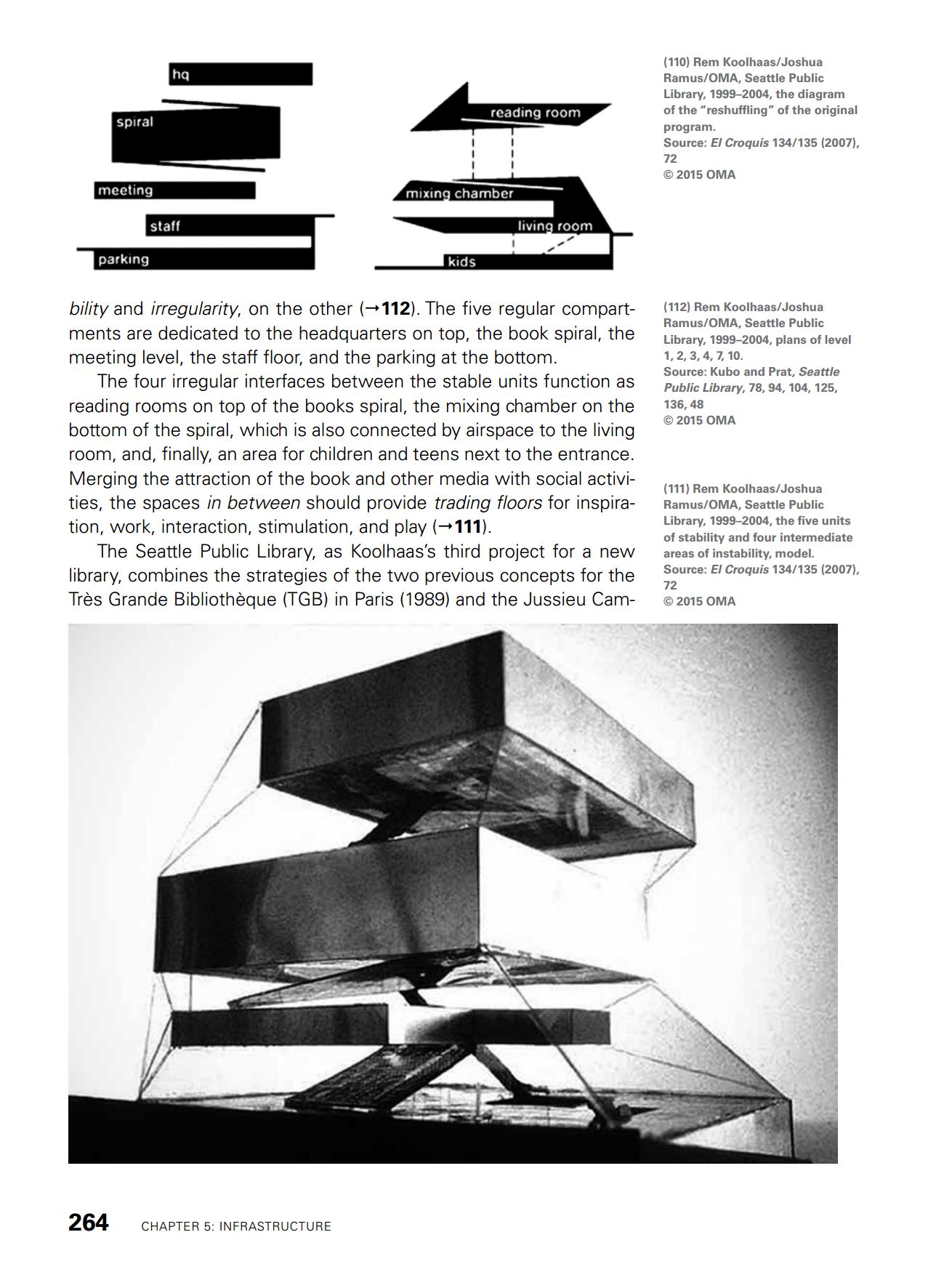|
|
Ingrid Böck. Six Canonical Projects by Rem Koolhaas : Essays on the History of Ideas. — Berlin, 2015  Six Canonical Projects by Rem Koolhaas : Essays on the History of Ideas / Ingrid Böck. — Berlin : jovis Verlag GmbH, 2015. — 367 p., ill. — (architektur + analyse 5 / edited by Anselm Wagner, akk Institute of Architectural Theory, Art History and Cultural Studies, Graz University of Technology, Austria). — ISBN 978-3-86859-891-9
Rem Koolhaas has been part of the international avant-garde since the nineteen-seventies and has been named the Pritzker Architecture Prize for the year 2000. This book, which builds on six canonical projects, traces the discursive practice behind the design methods used by Koolhaas and his office OMA It uncovers recurring key themes—such as wall, void, montage, trajectory, infrastructure, and shape—that have structured this design discourse over the span of Koolhaas's oeuvre. The book moves beyond the six core pieces, as well:
It explores how these identified thematic design principles manifest in other works by Koolhaas as both practical reapplications and further elaborations.
In addition to Koolhaas's individual genius, these textual and material layers are accounted for shaping the very context of his work's relevance. By comparing the design principles with relevant concepts from the architectural Zeitgeist in which OMA has operated, the study moves beyond its specific subject—Rem Koolhaas—and provides novel insight into the broader history of architectural ideas.
Ingrid Böck is a researcher at the Institute of Architectural Theory, Art History and Cultural Studies at the Graz University of Technology, Austria.
TABLE OF CONTENTS
Acknowledgments 8
Introduction 9
Biographical Notes 25
1. WALL: EXODUS, OR THE VOLUNTARY PRISONERS OF ARCHITECTURE, London 1972 31
The Wall as a Means of Division, Exclusion, and Difference 33
Good Half and Bad Half of the City: Exodus, or The Voluntary Prisoners of Architecture 33
Decision-Making and the Authority of the Plan 42
Somatology and the Fictitious Entity of the Prison 49
Deterministic Form and Flexibility 52
Delimiting the World and Enabling Difference 57
Taking Place and the Sacred Nature of City Walls 59
The Ideal City and Other Models of Utopian Life 63
The Closed and the Open Society as Ideal Worlds 63
Nova Insula Utopia, or The Nowhere Place 66
Urban Vacancy and the Disappearance of Public Space 68
Reinventing Utopia, or Daily Life Beyond Necessity 70
Utopia Zero Degree, or Freedom Beyond Planning 73
The Manhattan Skyscraper as Utopia Zero Degree 73
The City as Script and Social Condenser 76
Amplifying the Program within Structures of Control 80
The Wall as a Means of Freedom Beyond Planning 82
2. VOID: VILLE NOUVELLE MELUN-SÉNART, PARIS 1987 87
Failed Agencies of Modern Urbanism 89
Planning Makes No Difference 89
Chaos and Nothingness: Ville Nouvelle Melun-Sénart 91
Metropolis and Disorder, or The City Without Qualities 99
Void and Future Development 105
The Watertight Formula of the Modern City 105
Tabula Rasa and Prospective Preservation 109
The Grid as Field of Projection 112
Void as Environment of Control and Choice 116
Infrastructure and Kit-of-Parts Architecture 116
Experiments of the Non-Plan and the Unhouse 119
The City as Social Work of Art 122
The Armature of Genericity 125
Critical Theory and the Architect's Status 125
The End of the Dialectic City 129
The Operating System of the Roma Quadrata 131
City Planning and Bricolage Technique 135
3. MONTAGE: MAISON À BORDEAUX, FRANCE 1994–1998 139
Dismantling Modernist Fragments 141
The Armature of Modernism: The Maison à Bordeaux 141
Architectural Promenade and Sequential Perception 144
Dismantlement and Disappearance 151
Between Modernist and Surrealist Ideas 157
Transgression and the Accursed Share in Architecture 165
The Rational and Irrational Side of Architecture 168
Architecture as Paranoid Critical Activity 168
Maritime Analogy 171
Un Cadavre Exquis 175
Metaphoric Planning and the Skyscraper Diagram 177
Montage and Filmic Reality 181
The Metropolis as Manifesto of Modern Life 181
Inventing Reality through Writing 185
Post-Structuralist Theory, or The Whole, Real, There 189
Montage and Creative History 193
4. TRAJECTORY: DUTCH EMBASSY, BERLIN 1999–2003 199
The Trajectory as Lived Experience of the Body 201
The Wall and the Cube: The Dutch Embassy in Berlin 201
The Pliable Surface as Inside-Out City 208
The Car as Modernist Sign of Motion and Lived Experience 215
Psychogeographic Mapping of the City 217
Architecture as Event, Transcript, and Folie 222
Identity and Aura, or The Trajectory as Historical Narrative 227
Historical Aura as Source of Identity 227
Displacement, Appropriation, and Erasure of Identity 232
Projecting National Identity, or The Typical and the Unique 235
The Dioscuri Motif, or Standardization and Individuality 237
Junkspace as the End of the Typical and the Generic 241
The Typical and the Generic 241
Junkspace as Dérive 245
Generic versus Brand 248
Typology and Flexibility, or Frame for Change 253
The Trajectory as Diagram of Performance 255
5. INFRASTRUCTURE: PUBLIC LIBRARY, SEATTLE 1999–2004 261
Expanding the Program of Semi-Public Space 263
Structures for Non-Specific Events 263
The Diagrammatic Section: The Seattle Public Library 267
Stable and Unstable Zones, or The Event-Structure of Semi-Public Space 273
Infrastructure Diagrams of Circulation 277
The Dialectic between Needle and Globe Structure 277
The Elevator as a Diagram of Discontinuity 283
The Escalator as a Diagram of Continuity and Circulation 288
Shopping and the Public Sphere 291
Technological Determinism and the Public Sphere 294
The Technological Sublime as Social Event 294
Infrastructural Techno-Utopias 298
Public Space as "Air-Conditioning Project" 300
6. SHAPE: CCTV, BEIJING 2002–2008 305
The Outdated Typology of the Skyscraper 307
An Adaptive Species: The CCTV Building in Beijing 307
New Typologies of the City 310
Shape as Content and Container 315
Neo-Liberal Conditions of Architectural Practice 317
Plasticity, or The Dialectic between Form and Shape 317
Post-Criticality 321
Originality and the Avant-Garde 324
Conclusion 329
Bibliography 338
Name Index 355
Imprint 368
Sample pages 
Download link (pdf, yandexdisk; 7,9 MB).
Все авторские права на данный материал сохраняются за правообладателем. Электронная версия публикуется исключительно для использования в информационных, научных, учебных или культурных целях. Любое коммерческое использование запрещено. В случае возникновения вопросов в сфере авторских прав пишите по адресу 42@tehne.com.
30 декабря 2020, 17:20
0 комментариев
|
Партнёры
|






Комментарии
Добавить комментарий